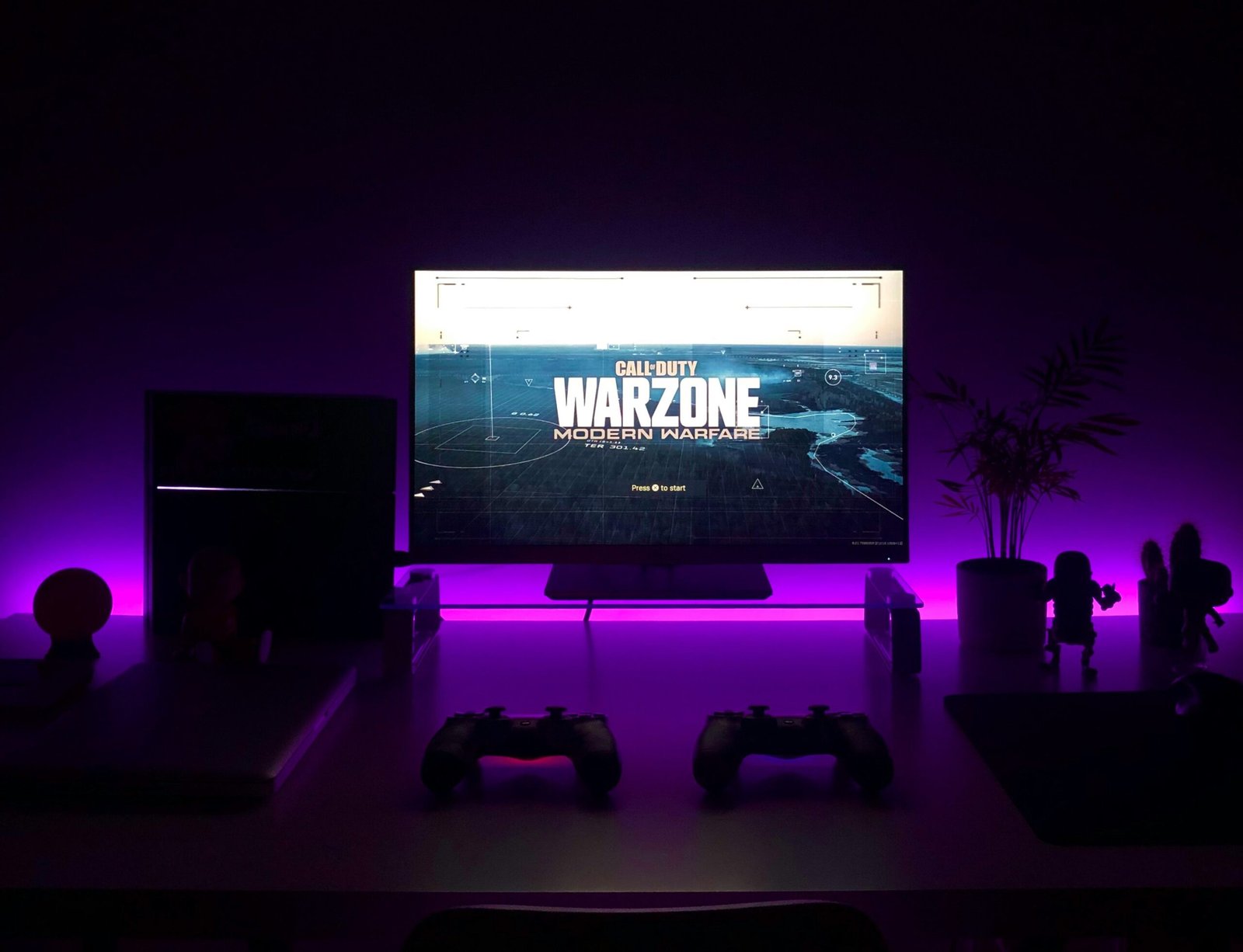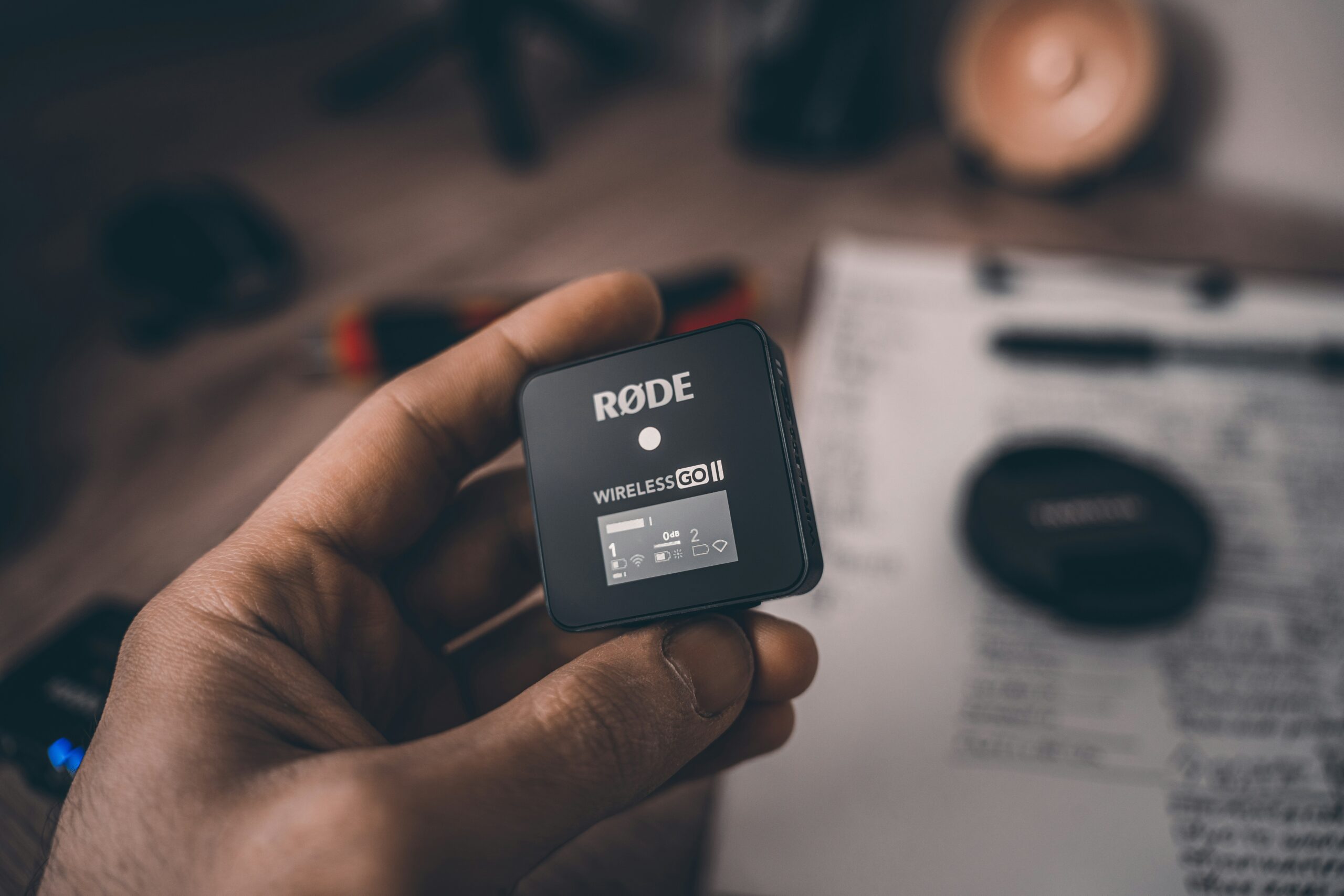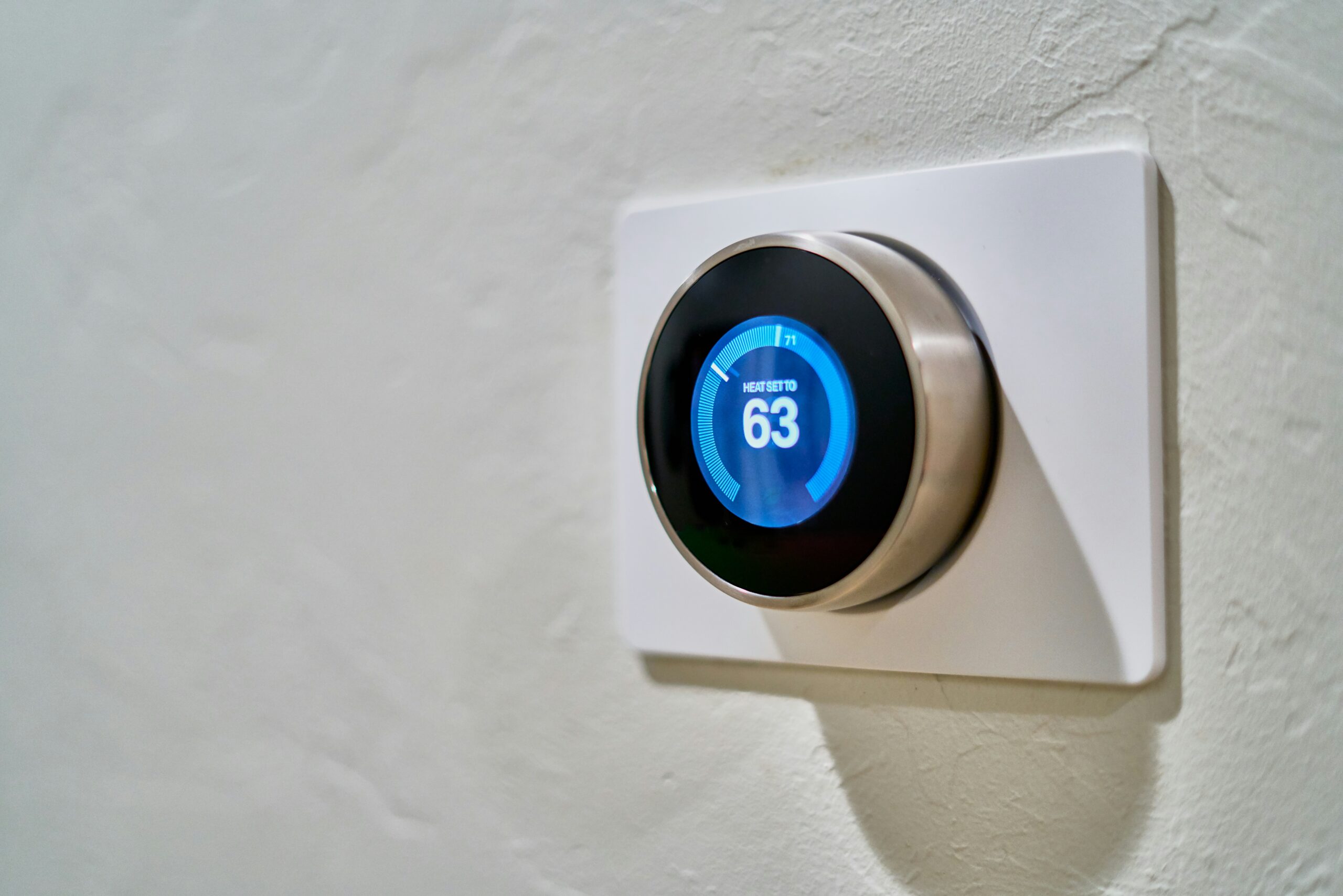
Introduction to OLED and QLED Technology
In the realm of modern televisions, OLED (Organic Light Emitting Diode) and QLED (Quantum Dot Light Emitting Diode) have emerged as leading technologies, each offering unique advantages for consumers, particularly gamers. Understanding the fundamental principles behind these technologies is crucial for making an informed choice when it comes to the comparison of OLED vs QLED TVs for gamers.
OLED technology operates by employing organic compounds that emit light when an electric current passes through them. This characteristic allows each pixel to illuminate independently, resulting in true blacks since unlit pixels remain completely dark. The ability to turn off individual pixels provides OLED displays with excellent contrast ratios and vibrant colors, making them ideal for immersive gaming experiences where visual depth and detail are paramount.
On the other hand, QLED technology utilizes quantum dots to enhance the brightness and color accuracy of LED-backlit LCDs. QLED TVs have a layer of quantum dots that can be activated by the backlight, enabling them to produce a wide range of colors at high brightness levels. This technology excels in delivering vivid imagery in well-lit rooms but has limitations in achieving deep blacks due to the reliance on a backlight. The color accuracy and brightness provided by QLED make it a competitive option in the landscape of displays tailored for gaming.
Both technologies have undergone significant innovations, especially within the gaming sector. As gaming graphics have evolved, the demand for displays capable of rendering high dynamic range and fast refresh rates has grown. OLEDs have made strides in becoming favored for their quick response times, which effectively reduce motion blur. Meanwhile, QLEDs have focused on enhancing brightness and color fidelity, appealing to gamers seeking vibrant visuals. The continued innovation of these technologies supports the diverse preferences of gamers, further fueling the ongoing comparison of OLED vs QLED TVs for gamers.
Image Quality: Brightness and Color Performance
The comparison of OLED vs QLED TVs for gamers heavily hinges on the aspect of image quality, particularly brightness and color performance. OLED TVs are renowned for their ability to produce perfect blacks due to their self-illuminating pixels. This characteristic allows for an extraordinary contrast ratio, resulting in richer colors and more defined details in dark scenes, which is especially significant for gaming. When playing games that rely on atmospheric lighting effects, the depth provided by OLED can create an immersive experience, allowing gamers to discern details that might be lost on lesser displays.
On the other hand, QLED TVs shine in terms of brightness. Utilizing quantum dot technology, these televisions can reach higher brightness levels than OLED models. This feature is particularly advantageous for gamers who enjoy titles with vivid graphics and HDR content, where bright highlights can enhance the overall visual experience. The increased brightness levels enable QLED TVs to display vibrant colors that pop on-screen, providing an engaging experience for gamers who appreciate a dynamic aesthetic. Therefore, while OLED excels in darker visuals and contrast, QLED offers an edge when it comes to showcasing bright and vibrant imagery.
Another vital aspect to consider is the performance of both technologies in different environments. Gamers who usually play in darker rooms may favor OLED TVs for their deeper blacks, which facilitate a more engrossing gaming atmosphere. Conversely, those gaming in well-lit spaces might find QLED’s superior brightness levels and color production more suitable. Ultimately, the choice between OLED and QLED will depend significantly on individual preferences regarding image quality, particularly concerning brightness and color performance, which are crucial in the comparison of OLED vs QLED TVs for gamers.
Response Times and Input Lag: A Gamer’s Perspective
In the realm of competitive gaming, the terms “response time” and “input lag” play a crucial role in a player’s overall experience. For gamers, these metrics can significantly affect gameplay performance, particularly in fast-paced genres such as first-person shooters and racing games. A lower response time indicates how quickly a pixel can change from one color to another, while input lag refers to the delay between a user’s action and the corresponding response on the screen.
When comparing OLED and QLED TVs, it becomes evident that both technologies offer unique advantages. OLED TVs typically boast faster response times, frequently clocking in at less than 1 millisecond. This rapid pixel response allows for near-instantaneous changes in image, essential for fast-paced gameplay where every millisecond counts. The impressive response time of OLED screens can provide a smoother visual experience, helping gamers better track rapid movements and react promptly to in-game actions.
On the other hand, QLED TVs tend to have slightly higher response times, often in the range of 5 to 10 milliseconds. However, this does not inherently disqualify them from gaming use. Many QLED displays still perform excellently in terms of input lag, often achieving up to 15 milliseconds or less. For most gamers, this level of input lag is acceptable, especially for genres that don’t require top-tier response times. Additionally, many QLED TVs are equipped with features such as “Game Mode,” reducing input lag further, thus enhancing performance.
In choosing between OLED and QLED for gaming, users should consider their gaming preferences and the types of games they play. For fast-paced, competitive environments, OLED’s superior speeds may provide an edge, but QLED offers respectable performance that many gamers find satisfactory. Ultimately, understanding the response times and input lag between these technologies is crucial for an informed decision in the context of a gamer’s needs.
Refresh Rates and Variable Refresh Rate Support
When considering the ideal television for gaming, refresh rates and their adaptability significantly impact the overall experience. High refresh rates are crucial in the world of gaming, as they dictate how smoothly images are rendered on screen. For gamers seeking responsive gameplay, both OLED and QLED TVs offer varying strengths in this arena, especially when assessing the comparison of OLED vs QLED TVs for gamers.
OLED TVs are renowned for their impressive refresh rates, often reaching 120Hz. This high refresh capability allows for rapid frame transitions, leading to a clearer and more fluid visual experience during high-speed action sequences. Furthermore, OLED technology excels in delivering deep blacks and vibrant colors, enhancing the overall viewing experience during dark scenes in games. Notably, OLED displays utilize pixel-level lighting control, ensuring that fast-moving objects appear sharper and more defined, which is essential for competitive gameplay.
On the other hand, QLED TVs also boast competitive refresh rates, commonly achieving up to 120Hz. Their Quantum Dot technology enhances brightness and color accuracy, which contributes positively to the gaming experience. Additionally, many QLED models come equipped with Variable Refresh Rate (VRR) support, such as NVIDIA G-SYNC or AMD FreeSync, which work to eliminate screen tearing. This synchronization allows the TV to adjust its refresh rate to match the frame rate output of the gaming console or PC, leading to a smooth and uninterrupted gaming session.
Both OLED and QLED technologies have their merits, and the effectiveness of each in terms of refresh rates and VRR support can cater to different gaming preferences. Gamers who prioritize unmatched contrast and black levels may lean towards OLED, while those who value brightness and adaptive refresh capabilities might prefer QLED. Ultimately, the choice hinges on individual gaming needs and the specific gameplay experiences desired.
Burn-In Issues: Longevity and Usage Concerns
In the context of the comparison of OLED vs QLED TVs for gamers, one of the significant concerns regarding OLED technology is the phenomenon known as burn-in. Burn-in occurs when static images are displayed for prolonged periods, leading to a permanent ghost-like imprint on the screen. This problem is particularly pertinent for gamers who often navigate through user interfaces or HUD elements that remain constant on their screens during gameplay.
Burn-in is a result of uneven wear of the OLED pixels, which emit light independently. Each pixel in an OLED display can degrade at different rates based on its usage, and static images can accelerate this process. Consequently, gamers who frequently play games with static HUDs or logo placements may encounter this issue more readily compared to users who have varied viewing content. In contrast, QLED TVs utilize a different panel technology based on quantum dots, which do not suffer from burn-in. This distinction makes QLED a more favorable option for those who engage in prolonged gaming sessions with static content.
To mitigate the risk of burn-in when using OLED displays, users can adopt several preventative measures. Gamers should consider enabling features such as pixel shift or screen savers, which can help reduce the potential for image retention. Regularly alternating games or ensuring that gameplay includes dynamic content can also minimize the chances of experiencing burn-in. Furthermore, maintaining a balanced brightness level rather than setting it at maximum can prolong the longevity of the OLED panel.
In evaluating the durability of both technologies, OLEDs are renowned for their deep blacks and color accuracy, while QLEDs generally exhibit robust longevity without the risk of burn-in. Thus, while the comparison of OLED vs QLED TVs for gamers can lead to preferences based on visual quality, the implications of burn-in should remain a crucial consideration for select users.
Gaming Features: HDMI 2.1, Gaming Modes, and More
When evaluating the comparison of OLED vs QLED TVs for gamers, it is essential to focus on the gaming-centric features that each technology offers. One significant advancement is the support for HDMI 2.1, which is critical for gamers utilizing next-generation consoles such as the PlayStation 5 and Xbox Series X. HDMI 2.1 provides increased bandwidth, allowing for higher resolutions (up to 8K) and refresh rates (up to 120Hz), resulting in smoother gameplay and enhanced visuals. Both OLED and QLED models that incorporate HDMI 2.1 can yield remarkable performance, but it is vital to check specific models for compliance.
In addition to HDMI 2.1, various gaming modes are available on both display technologies to further improve the gaming experience. These modes often optimize picture settings to reduce input lag and enhance response times. For gamers who value competitive gameplay, this aspect becomes essential as it allows for quicker reactions. Auto low latency mode (ALLM) is another feature that many new models support, automatically switching to the most appropriate settings as soon as a gaming device is detected.
Moreover, features such as Variable Refresh Rate (VRR) are supported by both technologies, helping to eliminate screen tearing and stuttering during fast-paced gameplay. VRR adapts the refresh rate of the TV to match the frame output of the gaming console or PC, ensuring a seamless visual experience. Additionally, both OLED and QLED TVs provide excellent HDR (High Dynamic Range) capabilities, which enhance the overall dynamic range and color accuracy, making for a more immersive gaming environment.
Ultimately, while the comparison of OLED vs QLED TVs for gamers highlights numerous similarities, understanding the specific gaming features and their implications for performance will guide gamers into making an informed choice based on their preferences and gaming setups.
Price Considerations: Value for Gamers
When evaluating the comparison of OLED vs QLED TVs for gamers, price remains one of the most critical factors influencing purchasing decisions. Both technologies have their unique pricing trends, which continue to evolve as advancements occur in display technology. OLED TVs are generally positioned at a higher price point due to their manufacturing costs and superior picture quality, offering deep blacks and vibrant colors that can significantly enhance the gaming experience. On the other hand, QLED TVs typically come at a more competitive price, providing a solid balance between performance and affordability.
From a value perspective, gamers must consider what features justify potentially higher prices. OLED panels boast excellent response times and wide viewing angles, which can be particularly advantageous during intense gaming sessions, where every fraction of a second can impact performance. However, QLED TVs offer impressive brightness levels and color accuracy, making them ideal for gamers who play in well-lit environments. Therefore, the decision should be based on individual gaming setups and preferences.
For budget-conscious consumers, both OLED and QLED technologies provide a range of options. There are entry-level QLED models available that deliver great performance for the price, along with some mid-range OLED options that deliver quality visuals without breaking the bank. It is essential to prioritize features based on gaming needs: for instance, refresh rates, input lag, and HDMI 2.1 support should be high on the list for gamers aiming for a competitive edge, regardless of whether they opt for OLED or QLED.
Ultimately, the comparison of OLED vs QLED TVs for gamers should take into account not just the price alone, but the overall performance, individual gaming habits, and the environment where the TV will be used. By carefully assessing these factors, gamers can make an informed decision that aligns with both their gaming aspirations and budget constraints.
Viewing Angles and Room Environment
When it comes to the comparison of OLED vs QLED TVs for gamers, one of the most significant factors to consider is the viewing angle. Each technology offers distinct characteristics that can greatly affect the gaming experience, particularly in multi-player settings where several gamers may be positioned at different angles relative to the screen. OLED TVs utilize organic light-emitting diodes that allow for vibrant colors and deep blacks, resulting in stunning visuals even from wide viewing angles. This is crucial for co-op gaming or family game nights, where players might be seated off to the sides of the screen.
On the other hand, QLED TVs, which employ quantum dot technology on a traditional LED backlit display, tend to lose color accuracy and brightness when viewed from steep angles. While they excel in bright room environments, their performance may diminish when gamers are seated at an angle beyond 30 degrees, making them less favorable for a collective gaming experience. In contrast, OLED displays maintain their color integrity and viewing experience across wider angles, which can enhance engagement in group gaming sessions.
Furthermore, the room environment plays a pivotal role in performance. In darker settings, OLED TVs shine due to their ability to produce true blacks, resulting in an immersive gaming experience. Shadows and dark scenes appear detailed, enhancing atmospheric gameplay. Conversely, QLED TVs are more suitable for brightly lit rooms, as they can achieve higher brightness levels that help in combating ambient light. This adaptability is essential for gamers who prefer playing in various room conditions.
Overall, understanding the impact of viewing angles and room environments is vital in making an informed decision in the comparison of OLED vs QLED TVs for gamers. Each technology has its strengths and weaknesses, and selecting the right one will ultimately depend on the typical gaming setup and environment.
Conclusion: Which Display Technology is Best for Gamers?
In reviewing the comparison of OLED vs QLED TVs for gamers, it is vital to consider the distinct advantages and limitations each technology presents. OLED displays are known for their exceptional contrast ratios and deep blacks, which can enhance the visual experience during immersive gaming sessions. The pixel-level lighting of OLED allows for a degree of detail and richness that can significantly elevate atmospheric titles, making them particularly appealing to those who enjoy single-player experiences or narrative-driven games.
On the other hand, QLED technology shines in delivering bright images, excellent color volume, and high peak luminance levels. This strength becomes especially noticeable in well-lit environments, where QLED TVs can maintain visibility without compromising color accuracy. For competitive gamers, the high refresh rates and low input lag associated with many QLED models can provide a competitive edge, allowing for more responsive gameplay. Gamers who frequently play fast-paced titles may find QLED displays to be more suitable for their needs.
Ultimately, the choice between OLED and QLED for gaming depends on the individual preferences and gaming styles of the user. Casual gamers who appreciate stunning visuals and deep blacks may prefer an OLED TV, while competitive gamers who prioritize performance in bright environments might opt for QLED technology. Both technologies deliver impressive capabilities, and today’s market offers various options that cater to diverse requirements. In terms of overall value, an informed decision on the comparison of OLED vs QLED TVs for gamers will hinge on personal criteria, including gaming habits, environment, and budget.

